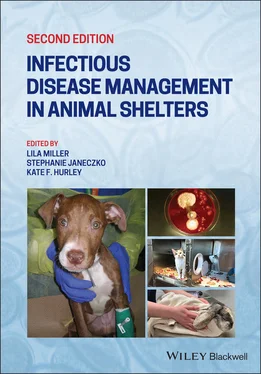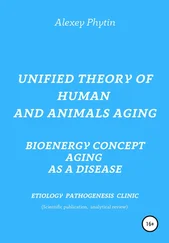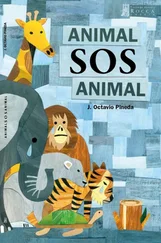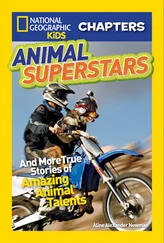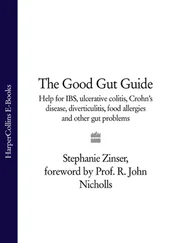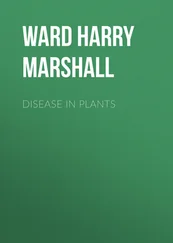1 ...7 8 9 11 12 13 ...52 Fast Track management involves identifying those animals that, as noted above, have the potential to move rapidly through the shelter to adoption. While each shelter should identify what makes an animal “fast track” based on their own records and experience, for most shelters, this will include puppies, kittens, and friendly, healthy, non‐geriatric animals, especially those with an unusual breed/appearance, a compelling story, or physical features such as one eye or extra toes that make them appear to be most adoptable.
At its most basic, Fast Track management simply means that these animals “skip to the head of the line” to be processed first. In other words, rather than processing animals in order of intake date, the most adoptable animals get the first spot available in surgery or on the adoption floor. While this may initially seem unfair, Fast Track management tends to benefit “slow track” animals equally, if not more. By moving the fast trackers through quickly, population density is reduced, leaving more space and time to care for, enrich and promote the slow trackers; all of which also helps them move through the shelter more quickly. In fact, some shelters have reported greater decreases in LOS for slow trackers than for fast trackers following a shift to this management method. Additional resources on this subject can be found in the textbook “Shelter Medicine for Veterinarians and Staff” and by searching online for the term Fast Track management in animal shelters (Newbury and Hurley 2012). At the time of publication, two excellent resources on this subject could be found at ( https://www.animalsheltering.org/magazine/articles/life‐fast‐lane) and https://www.sheltermedicine.com/library/resources/?r=fast‐track‐slow‐track‐flow‐through‐planning.
Open Selection simply refers to the practice of allowing potential adopters to view, interact with and select animals during their holding period. It is appropriate for any potentially adoptable animal, without valid identification or other indicators, that they are likely to be reclaimed. By allowing Open Selection, the legal hold on a stray animal can serve the double purpose of allowing animals to be considered for adoption at the same time as awaiting possible reclaim, with the benefit that the potential adopters themselves will then indicate which animals are truly “Fast Track.” By definition, any animal selected for adoption during its hold period has the potential to move quickly through the system and should be prioritized for surgery or any required procedures as soon as they can legally be performed.
Logistically speaking, depending on the housing setup, Open Selection animals can be directly housed in adoption areas with signage indicating that they are not yet available, or visitors can be allowed into stray holding areas. Either way, a simple system should be developed to document holds and determine priority, if more than one potential adopter is interested. Open Selection alone can have a surprisingly big impact on lowering the LOS and reducing population density, sometimes opening the door for more resource‐intensive interventions such as daily rounds or housing improvements. This is especially true where a long stray hold inevitably prolongs LOS or when lack of room in adoptions or lack of staff for needed procedures (such as testing or surgery) leaves animals to languish in the shelter past their date of availability.
1.3.2.3 Other Methods to Reduce the Length of Stay
In addition to the methods outlined above, shelter managers and veterinarians should work together with policymakers and other stakeholders, as needed, to reduce unproductive LOS at every opportunity. This is by no means an exhaustive list, but some methods may include:
Reduce or eliminate stray‐holding periods, especially for animals unlikely to be reclaimedIn most shelters, reclaim – or at least initial contact with an owner – tends to occur within the first few days of impound. Holding periods beyond this tend to delay progress along other life‐saving pathways.
Eliminate voluntary intake quarantine periods for healthy appearing animals (as described earlier in this chapter).This includes eliminating holds for puppies and kittens awaiting second vaccines. The best protection for young animals is to practice excellent biosecurity when handling and housing in a shelter, and to move them out into homes (permanent or foster) as quickly as possible.Intake quarantine may still be indicated for animals with an extraordinarily high risk of serious disease, such as transfers from a shelter experiencing an active parvovirus or distemper outbreak or victims of animal hoarding.
Eliminate bottlenecks associated with procedures that can only be performed by specialized staff, especially those that are difficult to interpret or provide limited additional information to adopters.Consider allowing feline leukemia virus (FeLV) and feline immunodeficiency virus (FIV) testing to be performed by the adopter's veterinarian with the opportunity for more in‐depth conversation and follow‐up about the implications and uncertainties of test interpretation and prognosis in a healthy cat.Consider replacing formal behavior evaluations in dogs with a holistic assessment of the dog's history and behavior throughout the shelter stay. Some shelter medicine and behavior experts have raised questions about the validity of non‐ peer‐reviewed behavior evaluations of shelter animals for adoption (Patronek and Bradley 2016).
Perform spay/neuter surgery on healthy, robust kittens at 1.5 pounds rather than waiting until they reach 2 pounds.Though 2 pounds/1 kg have been common cut‐offs for surgical weight in kittens, there is no scientific basis for this tradition and 1.5 pounds is considered acceptable from both a surgical and developmental perspective (ASV 2016).The same surgical, anesthetic, before‐ and after‐care precautions should be used as for pediatric spay/neuter in 2‐pound kittens.This can be especially helpful in reducing LOS when foster options are limited and kittens must spend time in the shelter awaiting either a foster home or surgery.
1.3.3 The Importance of Good Housing
For both dogs and cats, shelter housing plays a pivotal role in determining disease risks and spread. The quality and setup of the housing unit will impact every aspect of the animal's experience, from how well they eat and sleep to the quality of the air they breathe. In turn, these factors will in large part determine the animal's susceptibility to disease. Something as simple as separate areas for feeding/resting versus elimination can have a profound effect on animal health and well‐being.
The elements of adequate housing to support shelter animal health are described in more detail in Chapter 2on Wellness, as well as in the ASV Guidelines for Standards of Care in Animal Shelters and other resources. For instance, a comprehensive description of cat‐housing considerations in shelters was recently published at the time of this writing. As shelter housing best practices evolve, they should be given priority and attended to meticulously. Though animal health can be preserved even in a dilapidated facility, if the housing units themselves impede an animal's ability to exhibit normal behaviors, are cramped or poorly ventilated and exacerbate noise or stress, infectious disease control will be an ongoing struggle.
1.3.4 Balancing Intake and Positive Outcomes
Right‐sizing the population, actively managing LOS and providing high‐quality housing will go a long way toward maintaining a shelter population within the organization's capacity to provide care. However, there may still be times when the incoming population exceeds the organization's ability to provide appropriate outcomes. While even the most successful shelter health program may not be sufficient to fully remedy such an imbalance – especially when substantial funding or policy barriers to life‐saving programs exist – interventions other than euthanasia are more likely to be effective and accepted, as well as being an end in themselves.
Читать дальше
